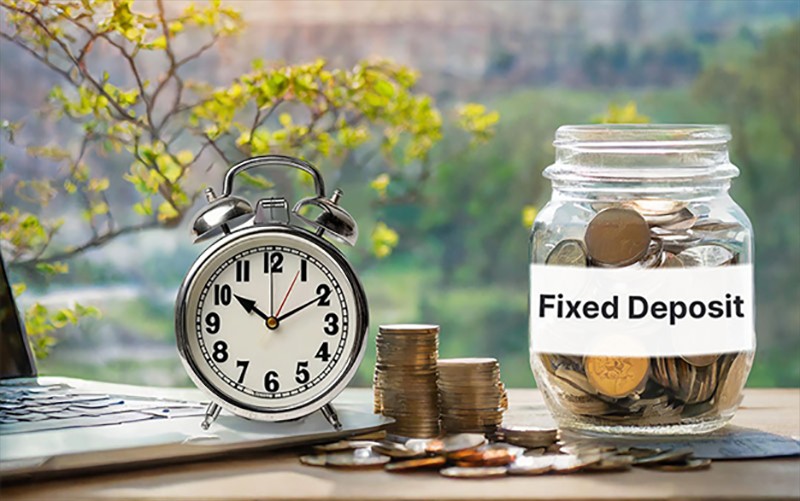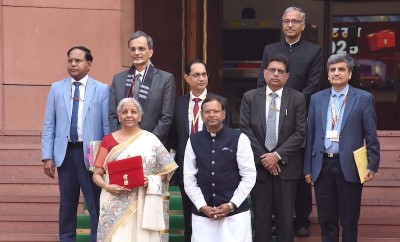 Fixed Deposit
Fixed Deposit
Advantages of Short-Term Fixed Deposit Investing Over Long-Term
Introduction
Fixed Deposits (FDs) are one of the most preferred investment options for individuals seeking safe and assured returns. However, choosing between short-term and long-term FDs can be challenging. While long-term FDs offer stability, short-term FDs provide better flexibility, higher liquidity, and adaptability to changing interest rates.
With short term FD rates frequently fluctuating, investors can take advantage of rising interest rates and reinvest for better returns. Additionally, corporate FDs provide an alternative safe investment avenue, offering competitive returns with minimal risk.
This article explores the key benefits of short term FD investing and how it compares to long-term FDs in today’s financial landscape.
What is a Short-Term Fixed Deposit?
A short-term FD is a deposit account where funds are invested for a period ranging from 7 days to 12 months. Unlike long-term FDs, where the money remains locked for several years, short-term FDs offer:
· Higher liquidity
· Adaptability to changing interest rates
· Minimal risk exposure to inflation
· Lower penalty on premature withdrawals
These advantages make short-term FDs an ideal choice for emergency funds, parking idle money, and taking advantage of interest rate fluctuations.
Key Advantages of Short-Term Fixed Deposits
1. Higher Liquidity and Accessibility
· Short-term FDs provide easy access to funds, making them ideal for emergency expenses.
· Unlike long-term FDs, which impose higher penalties on premature withdrawals, short-term FDs allow quicker liquidation with minimal loss.
· Ideal for individuals who may need funds within one year.
2. Better Adaptability to Interest Rate Changes
· With short term FD rates fluctuating frequently, investors can reinvest at higher rates whenever possible.
· Long-term FDs lock in an interest rate for several years, which may not be beneficial if rates rise.
· Short-term investors have the flexibility to redeploy funds in better-yielding instruments.
3. Lower Risk of Inflation Erosion
· Inflation reduces the purchasing power of money over time.
· Long-term FDs may not keep pace with inflation if interest rates remain low.
· Short-term FDs allow investors to adjust their investments periodically, reducing inflationary impact.
4. Ideal for Corporate FD Safe Investment Strategy
· Corporate FDs are considered a safe investment, offering higher returns than traditional bank FDs.
· Many corporate FDs come with short-term tenures ranging from 6 to 12 months.
· Investors can benefit from higher interest rates while ensuring lower risk exposure.
5. Flexible Tenure Options
· Short-term FDs come with various tenure options, including 7 days, 30 days, 3 months, 6 months, or 12 months.
· This allows investors to ladder their deposits for better liquidity management.
6. Lower Penalty for Premature Withdrawals
· In case of an emergency, breaking a short-term FD results in a lower penalty compared to long-term FDs.
· Long-term FDs often charge higher premature withdrawal penalties.
7. Diversification of Investment Portfolio
·Investors can distribute funds across multiple short-term FDs for risk management.
· Combining bank FDs, corporate FDs, and other short-term instruments helps diversify risk and optimize returns.
Short-Term FD vs Long-Term FD: A Comparison
|
Feature |
Short-Term FD |
Long-Term FD |
|
Tenure |
7 days to 12 months |
1 year to 10 years |
|
Liquidity |
High |
Low (due to long lock-in period) |
|
InterestRate Fluctuation Impact |
Can reinvest at better rates |
Locked-in rate for entire tenure |
|
Inflation Risk |
Lower (frequent reinvestment) |
Higher (fixed rates may not keep up with inflation) |
|
Premature Withdrawal Penalty |
Lower |
Higher |
|
Best for |
Emergency funds, short-term savings |
Long-term wealth accumulation, retirement planning |
How to Choose the Best Short-Term FD Plan
To maximize returns on short-term FDs, consider these factors:
1. Compare Short Term FD Rates Across Banks and NBFCs
· Different banks and corporate FDs offer varying interest rates.
· Choose financial institutions offering higher rates with stable credit ratings.
2. Opt for Corporate FD Safe Investment
· Corporate FDs offer higher rates but should be chosen based on AAA credit ratings.
· Top corporate FDs include Bajaj Finance FD, Shriram Finance FD, and Mahindra Finance FD.
3. Select the Right Tenure Based on Liquidity Needs
· If funds are needed within 3-6 months, opt for shorter tenures.
· For better returns, choose 6-12 month FDs with higher interest rates.
4. Avoid Frequent Withdrawals
· Premature withdrawal reduces interest earnings.
· Plan investments carefully to avoid breaking the FD before maturity.
5. Consider Auto-Renewal for Convenience
· Banks offer auto-renewal options, allowing continuous reinvestment.
· Ensures consistent growth of idle funds.
Best Banks and NBFCs Offering Competitive Short Term FD Rates
|
Institution |
6-Month FD Rate |
12-Month FD Rate |
|
State Bank of India (SBI) |
5.50% |
6.00% |
|
HDFC Bank |
6.25% |
6.75% |
|
ICICI Bank |
6.30% |
6.80% |
|
Bajaj Finance FD |
7.27% |
7.40% |
|
Mahindra Finance FD |
7.60% |
8.10% |
Conclusion
Investing in short-term FDs offers a range of benefits, including higher liquidity, better adaptability to interest rate changes, and reduced inflation risk. Compared to long-term FDs, short-term FD rates fluctuate more often, allowing investors to reinvest at better rates when available. Additionally, considering corporate FD safe investment options can further enhance returns while maintaining capital security.
For investors seeking flexibility, emergency fund management, or strategic reinvestment opportunities, short-term FDs are an excellent choice. By comparing interest rates, selecting the right tenure, and diversifying across banks and NBFCs, investors can optimize returns while ensuring financial stability.
Support Our Journalism
We cannot do without you.. your contribution supports unbiased journalism
IBNS is not driven by any ism- not wokeism, not racism, not skewed secularism, not hyper right-wing or left liberal ideals, nor by any hardline religious beliefs or hyper nationalism. We want to serve you good old objective news, as they are. We do not judge or preach. We let people decide for themselves. We only try to present factual and well-sourced news.







